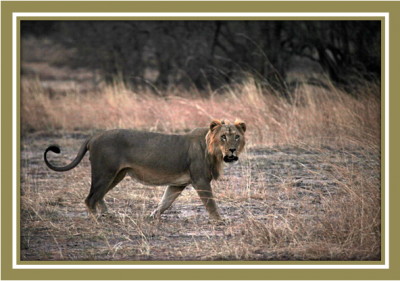News
Latest Lion Aid News
Western African lions are in very, very deep trouble
Tuesday 2nd September 2014
|
I’m more Indian than African – pay attention!
Recent surveys have estimated that only 400-600 or so of these genetically unique lions remain. Why are they unique? Well, because they are more closely related to lions in India than lions in the rest of Africa. That has been proven by a number of genetic analyses by independent researchers. I have written a number of blogs on the subject, and hopefully many have now become much more informed about these unique lions. But perhaps such information has not yet reached CITES or IUCN, as these organizations still insist that an African lion is just an African lion wherever it occurs. Not good for intelligent conservation, but those organizations have not shown stellar qualities in this area for the past decades, and do not like to consider genetic evidence. Despite their genetic uniqueness (they should be a lion subspecies just like the Asiatic lions are a subspecies) and their very small numbers (it is estimated that the surviving western African lions only occupy 1% of their former geographic range), these lions are still trophy hunted…. Surprised? Well, there’s more to the story than that. Let’s look at some numbers first, and begin with the IUCN estimated numbers of lions in western Africa derived from a conference in 2005. The IUCN estimated that there were 500-1,000 lions in the Niokolo Guinee ecosystem. A recent survey showed that there were probably not more than 16. The IUCN estimated there were 100-500 lions in the W-Arly-Pendjari area spanning Benin, Burkina Faso and Niger. Recent surveys estimate about 350. The IUCN estimated about 100 lions between two reserves in Nigeria. Recent surveys estimate 32. The IUCN said there were between 200- 360 lions between two reserves in Cameroon. Recent surveys estimate between 100-200. In short, the IUCN estimated there were about 1,960 lions in the areas mentioned while recent actual surveys show a maximum of about 600 and a minimum of 370. So there is a clear case to immediately declare western African lions highly endangered with this new evidence. But … as I mentioned Benin, Burkina Faso and Cameroon still allow lions to be trophy hunted. According to the CITES export numbers, Benin’s records show that in the five years 2008-2012 a total of 11 adult male lion trophies were exported. Over the same period, Burkina Faso exported 40 trophies, and Cameroon exported 18 trophy lions. However, from those same CITES records, it appears that Cameroon basically stopped exporting lion trophies after 2009, and Burkina Faso shows no lion trophy exports after 2010. Read that carefully. How wonderful, you might say, as this indicates that lion trophy hunting in those countries was shut down in recognition of the few lions that still occur. However, an impeccable source tells me a very different story. I have known him for some years now, and the information he provides has always been factual. He says that the actual export of lion trophies from Burkina Faso has held relatively steady at 10-13 lions per year, every year. In Cameroon, he says 6-9 lions have been shot every year. So why the discrepancy? It would appear that both Burkina Faso and Cameroon have been exporting lion trophies without reporting them to the CITES database. This is entirely possible, as CITES allows each lion range state to issue permits. Reporting those export permits to CITES seems optional, and we cannot just use Cameroon and Burkina Faso as examples. There are huge discrepancies for rhino hunting trophies from South Africa also. The EU has just recently passed an opinion on allowing future lion trophy imports from Benin. I cannot tell you what that opinion is until it becomes public. The EU will consider the Burkina Faso situation later this month. But the EU has no announced schedule to consider Cameroonian lions, a bit of an oversight on their part. All of this is highly important to lion conservation in those three countries as most of the trophies end up in EU countries, predominantly France. And CITES should also clean up its act. The very fact that Burkina Faso and Cameroon seem to be playing fast and loose with CITES reporting regulations while being CITES member states should seriously raise eyebrows at the CITES Secretariat. And I can promise that same Secretariat that this is just the tip of the iceberg. How to clean up this mess? It seems that the EU is also far along the path of deciding that all lion trophies need to be issued with not only an export permit by the country of origin but also an import permit by the country of destination. Irregularities between the two numbers can then be rapidly established. Until that happens, CITES permits are not worth the paper they are printed on and such permits are susceptible to be used to facilitate both unsustainable and illegal trade. Picture: Benin lion by Philipp Henschel If you have not already signed up to our mailing list, you can add your name here and keep up to date with our ongoing work and, most importantly, DONATE to support our work to conserve the remaining fragile lion populations. Thank you. Tags: CITES, Cameroon, Nigeria, western African lions, IUCN, Benin, Burkina Faso, Niger, EU, France Categories: Events/Fundraising, Traditional Medicine, Trophy Hunting, Domesticating Animals |
Posted by Chris Macsween at 17:23
No comments have been posted yet.
Add a new comment
Existing user
New user sign up




